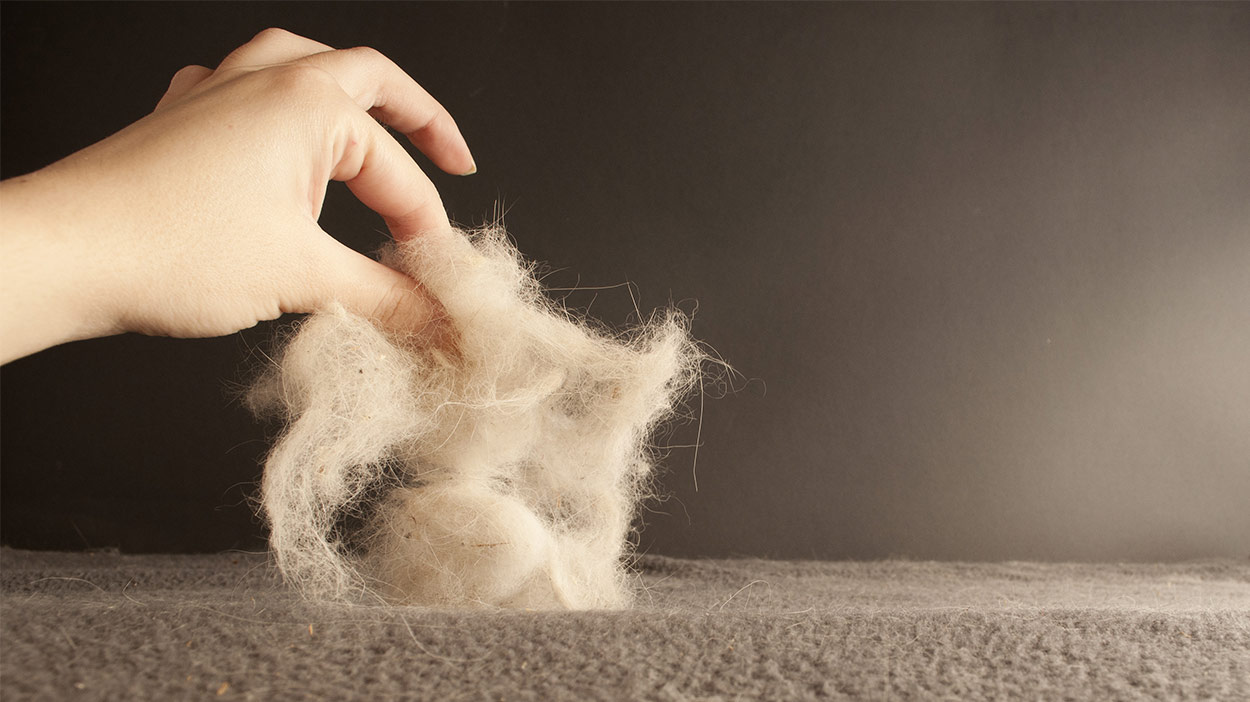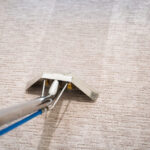It’s estimated that over half of Brits own a pet, so whether you’ve got a dog or cat at home or any other type of furry creature, you’ll probably soon discover that their shedded hairs can get everywhere! Naturally, your carpets are going to be first in the firing line for picking up pet fur, so how do you go about effectively removing it? Our Cambridge carpet cleaning experts have got all of the answers you need.
Why removing pet hair is important
Loose fur from pets not only makes a carpet look dirty, but it can contribute to causing uncomfortable symptoms for allergy sufferers in your home. Removing the build up of animal fur not only keeps your carpets in good condition, but it can be important for your health, and to improve the air quality in your home.
Vacuum regularly
Whether you’ve got pets or not, getting into a regular routine of vacuuming your carpets is a good idea to retain their clean and fresh appearance. However, pet owners will probably need to do this task more frequently to keep on top of the loose fur, at least twice per week or more, depending on how many pets you have, how frequently they have access to rooms with carpets and whether they are a short- or a long-haired breed. In some cases, you might need to vacuum daily.
For stubborn hairs that don’t want to budge, you could try adding a bit of baking soda to the carpet before vacuuming it. It’s thought that fur will stick to this, making it easier to remove – and better still, it can help to remove any pet odours!
Use a pet-friendly vacuum cleaner
The type of vacuum machine you use can make a difference to how effective the results are when removing pet hairs. You can buy specialist machines that are designed for pet owners, which come with pet tools, motorised brushes and attachments that make it easier to collect stray fur strands from your carpets.
Make sure the vacuum model you choose also has a decent HEPA filter and powerful suction function, as this can help to pick up more fur as well as pet dander in your carpets, thus reducing allergens in your home.
Studies claim that regular vacuuming with a pet-specific machine can eliminate 90% of fur more efficiently compared to standard vacuum machines.
However, bear in mind that vacuuming alone won’t be able to completely remove all of the embedded pet hair in a carpet, so it will need deep cleaning at least twice per year from professionals. At our carpet cleaning in Cambridge, for example, we use industrial vacuum machines and high-pressure steam cleaning equipment that remove all traces of your pets from carpets, and not just fur and dander, but also any odours, urine and pests.
Rubber gloves
If you’ve got a small carpet or a rug that has excessive pet hairs, some people swear that rubbing clean, damp rubber gloves over it works a treat for picking up loose pet hairs. Apparently, the gloves create static electricity when rubbed over the carpet, creating friction which makes it easier for the fur to stick to the gloves. Use gloves that have a textured surface, for even more fur pulling power.
Obviously, this method only works for small areas of carpet, or for hard-to-reach spots, such as corners or carpet edges where fur can often gather, but it’s cost-effective, eco-friendly and convenient, and one study even claims that it can remove as much as 80% of fur from a carpet.
Lint roller
Most pet owners will probably already be familiar with a lint roller, as they may use this to pick up loose fur from their clothes or on cushions or upholstery. However, did you know that it can also be used to spot clean small areas of a carpet, too?
Simple to use and inexpensive, lint rollers consist of a handle and roller with adhesive sheets or gels, which the fur sticks to when rolled across the carpet.
For a quick and easy fix if you don’t have a lint roller, wrap some adhesive or duct tape around your hand instead, with the sticky side up, and then dab it onto the carpet to catch the loose hairs.
Some pet owners argue that lint rollers work better on short-pile carpets rather than loop-pile ones, and it’s unlikely to get rid of all of the embedded hair, so you’ll still need to call out carpet cleaning in Cambridgeshire experts or professionals local to you for deeper maintenance cleaning of your carpets.
Wet sponge
Another method that pet owners swear by is dabbing a wet sponge to a carpet. This helps to clump and bind the fur together. The damp from the sponge also creates a small static charge, helping the fur to stick to the sponge.
Some people also recommend adding fabric softener with water to a bottle to lightly spray onto the carpet. It’s thought that this can assist in loosening pet hair, so it’s easier to remove when vacuuming.
Do be mindful, however, about applying too much water to a carpet. Some carpets don’t like it, and there’s a risk that mould and mildew may develop if a carpet gets too wet. If in doubt, ask our Cambridge carpet cleaning team for advice, or better still, leave the task to us, so there’s no risk of damage to your carpet or potential fungal growth.
Tools, brushes and blades
There are various different types of tools, brushes and blades you can use to clean your carpets, many of which are specific for picking up pet hairs. Some people also recommend using a clean pumice stone for gently scraping along the carpet, to trap the hairs.
The effectiveness of these can vary, however, and, often, a lot depends on the type of carpet. For example, users report better results with a pumice stone on a flat-weave carpet compared to a loop-pile one, so it may be a case of trial and error.
Avoid using harsh, scrubbing or brushing techniques that may be damaging to delicate carpet fibres, however, and if you don’t get the desired results, our carpet cleaning in Cambridgeshire can help.
Preventative measures
You can reduce the amount of pet fur that ends up in your carpets by grooming your pets regularly, preferably doing this outside, and washing pet beds or blankets frequently.
When buying a new carpet, choose a low-pile one that’s pet-friendly, so hairs are easier and quicker to remove and are less likely to get embedded deep inside it.
Either way, it’s still important to get your carpets professionally cleaned to pick up the hairs that you won’t be able to reach, so why not book with our carpet cleaning in Cambridge today?







